The terminology of color, wheel color and skill used to color
Color affects a lot of our minds. It can change the way we feel about an object within seconds. In this article, Quantrimang will work with you to learn useful terms that make mastering colors easier.
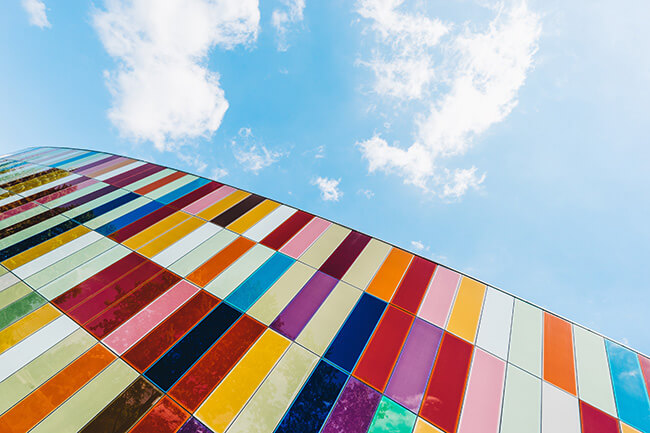 The terminology of color, wheel color and skill used to color Picture 1
The terminology of color, wheel color and skill used to color Picture 1 Color theory and color wheel
Have you ever wondered how designers can find the perfect color combination? Simply because of Color theory. Color theory is a realistic combination of art and science, used to determine which colors look good together.
Wherever there is light, the place has color. We often think that colors stand alone. The color we often see alone is always affected by the surrounding colors. Rather, it is a combination of surrounding elements.
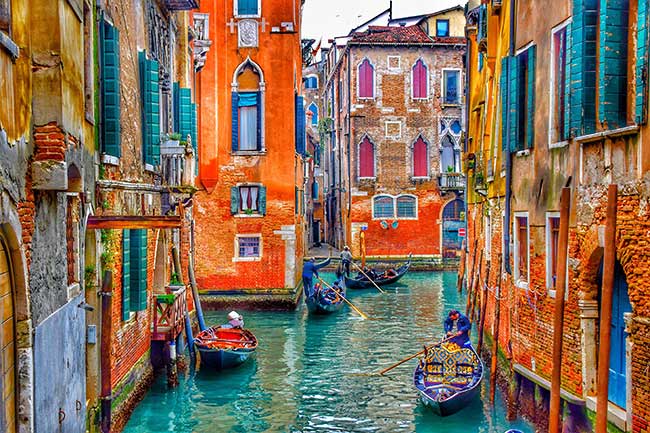 The terminology of color, wheel color and skill used to color Picture 2
The terminology of color, wheel color and skill used to color Picture 2 Color Wheel was invented in 1666 by Isaac Newton. He mapped the color spectrum to a circle, creating the most used color reference tool in design. The color wheel is the basis of color theory, because it shows the most obvious relationship between colors.
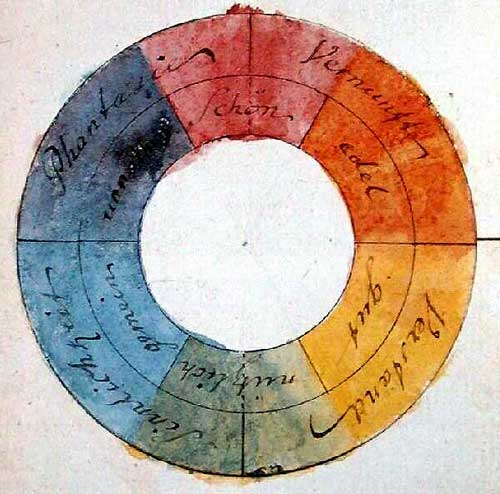 The terminology of color, wheel color and skill used to color Picture 3
The terminology of color, wheel color and skill used to color Picture 3 The colors combine with each other to look very beautiful, giving the viewer a balance, easy to call it Color harmony (Color harmony) . And the color wheel itself is a tool for designers to create harmony by using dithering rules . However, note that the color wheel is just a color reference tool, not a color picker.
There are two types of colored wheels:
- RYB (Red - Yellow - Blue, Red - Yellow - Blue) wheels are often used by many artists in the field of painting.
- RGB (Red - Green - Blue, Red - Green - Blue) color wheel : most used in color display in cathode ray tubes, liquid crystal displays or plasma screens, for example like a computer screen or a television.
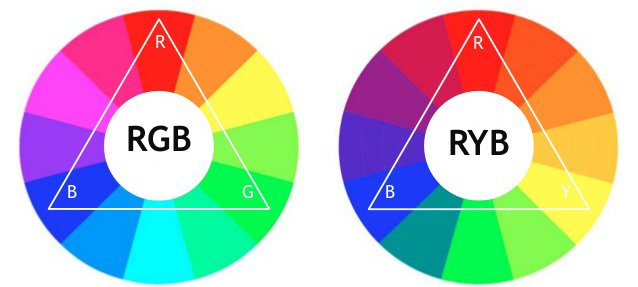 The terminology of color, wheel color and skill used to color Picture 4
The terminology of color, wheel color and skill used to color Picture 4 The colors make up the color wheel
There are 12 main colors on the color wheel , divided into three levels: main color (first color), silver color, tertiary color . Primary colors cannot be created by mixing other colors. Secondary color is the result of combining two main colors. The tertiary color is obtained by mixing the second color band.
Primary color (primary color - first grade color)
RYB color wheels , the three main colors include Red, Yellow and Blue.
RYB Red (Red) Yellow (Yellow) Blue (Blue)- According to color theory, mixing three basic colors together in different proportions will create all the remaining colors.If mixed with the same ratio will be black .
The color wheel is RGB , the three main colors include Red, Green and Blue.
RGB Red (Red) Green (Green) Blue (Blue)- According to color theory, mixing three basic colors together in different proportions will create all the remaining colors.If mixed with the same ratio will give white (light).
Secondary color
Secondary color is the result of mixing two basic colors together.
RYB color wheels have three quadratic colors including Purple, Orange and Green.
Red (Red) + Yellow (Yellow) = Orange (Orange) Yellow (Yellow) + Blue (Blue) = Green (Green) Blue (Blue) + Red (Red) = Purple (Purple)The RGB color wheel has three quadratic colors including Blue, Dark Pink and Yellow.
Red (Red) + Green (Green) = Yellow (Yellow) Green (Green) + Blue (Blue) = Blue (Cyan) Blue (Blue) + Red (Red) = Dark Pink (Magenta)Tertiary color
The third color is the color created by combining the primary colors with the second color.
RYB color wheels with six tertiary colors include:
Red (Red) + Orange (Orange) = Orange (Vermillion) Orange (Orange) + Yellow (Yellow) = Orange Yellow (Amber) Yellow (Yellow) + Green (Green) = Chartreuse Green (Green ) Green) + Blue (Blue) = Blue (Teal) Blue (Blue) + Purple (Purple) = Green purple Purple (Purple) + Red (Red) = Purple red (Magenta)Six- color RGB color wheel includes:
Red (Red) + Yellow (Yellow) = Orange (Orange) Yellow (Yellow) + Green (Green) = Banana green (Chartreuse) Green (Green) + Blue (Cyan) = Green (Spring green) Green Cauliflower (Cyan) + Blue (Blue) = Blue (Azure) Blue (Blue) + Dark Pink (Magenta) = Purple Violet (Violet) Dark Pink (Magenta) + Red (Red) = Pink Rose (Rose)RYB and RGB color codes
12 main colors of RYB:
RED# FF0000
(255,0,0)
# FF8000
(255,128,0) YELLOW
# FFFF00
(255,255,0)
# 80FF00
(128,255,0) GREEN
# 00FF00
(0.255,0)
# 00FF80
(0.255,128) CYAN
# 00FFFF
(0,255,255)
# 0080FF
(0,128,255) BLUE
# 0000FF
(0,0,255)
# 8000FF
(128,0,255) MAGENTA
# FF00FF
(255,0,255)
# FF0080
(255,0,128)
12 main colors of RGB:
RED# FE2712 RO
# FC600A ORANGE
# FB9902 YO
# FCCC1A YELLOW
# FEFE33 YG
# B2D732 GREEN
# 66B032 BG
# 347C98 BLUE
# 0247FE BP
# 4424D6 PURPLE
# 8601AF RP
# C21460
Color combination (Color combination)
Complementary color scheme (Complementary)
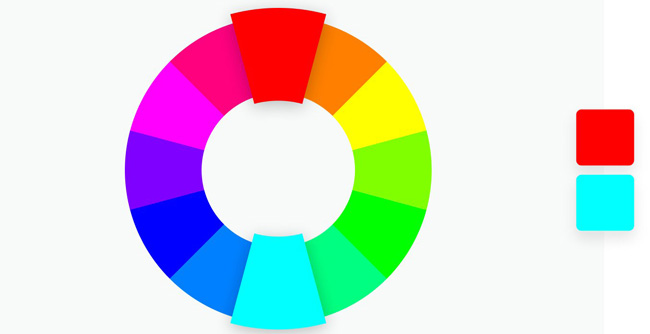 The terminology of color, wheel color and skill used to color Picture 5
The terminology of color, wheel color and skill used to color Picture 5
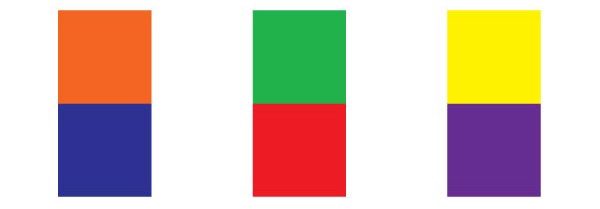 The terminology of color, wheel color and skill used to color Picture 6
The terminology of color, wheel color and skill used to color Picture 6 This is the most common color combination, using two opposite colors on the color wheel. These colors look naturally beautiful when walking together because of the strong impact on the viewer because of the high contrast, together they will look brighter and more prominent. However, avoid using the same color ratio, you should choose a predominant color and the remaining color for smaller accompanying details to help prevent roughness.
 The terminology of color, wheel color and skill used to color Picture 7
The terminology of color, wheel color and skill used to color Picture 7 Monochromatic color scheme (Monochromatic)
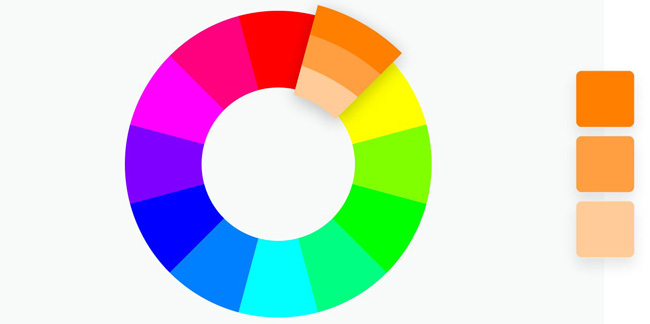 The terminology of color, wheel color and skill used to color Picture 8
The terminology of color, wheel color and skill used to color Picture 8 Monochromatic color scheme means that you will get a favorite color and use tint, shade, tone variations (explained in the content below) to create subtle, full-color works Different dark colors, forming a long monochromatic color .
Monochromatic color scheme is both minimalist and high value for the work. This color scheme is very eye-catching and pleasant to the viewer, bringing a high level of focus, the viewer is not distracted but only focuses on the important content.
 The terminology of color, wheel color and skill used to color Picture 9
The terminology of color, wheel color and skill used to color Picture 9 This is a combination of flexible colors, easy to apply for design projects to decorate houses, small apartments . help the space become more bright and spacious. For a large space, monochromatic increases the expanse of that space.
Analogous color schemes (Analogous)
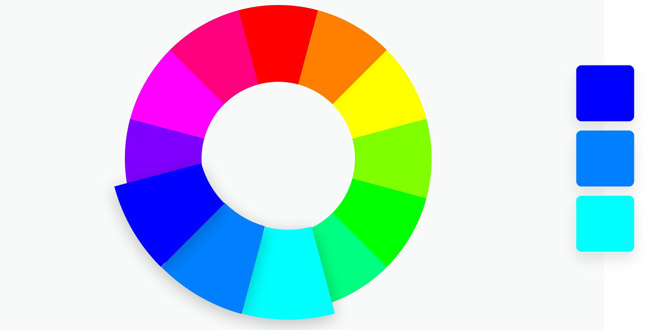 The terminology of color, wheel color and skill used to color Picture 10
The terminology of color, wheel color and skill used to color Picture 10 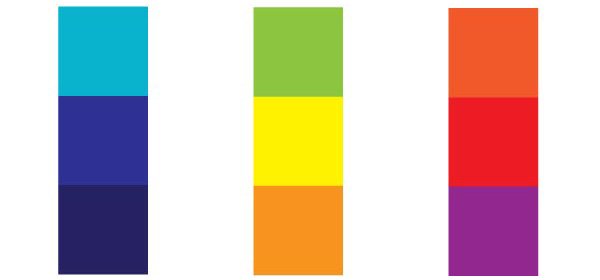 The terminology of color, wheel color and skill used to color Picture 11
The terminology of color, wheel color and skill used to color Picture 11 The same color is a group of three colors standing side by side in the wheel of color (regardless of heat - cold), standing close to each other looks quite similar to create very elegant and attractive color schemes.
Combining similar colors in a variety of colors than a monochromatic color scheme. However, if you leave the colors with equal proportions, they are easy to overwhelm, looking a little confused. The best way to balance is to choose a dominant color and use the remaining colors as a highlight.
 The terminology of color, wheel color and skill used to color Picture 12
The terminology of color, wheel color and skill used to color Picture 12 Triadic triadic (Triadic)
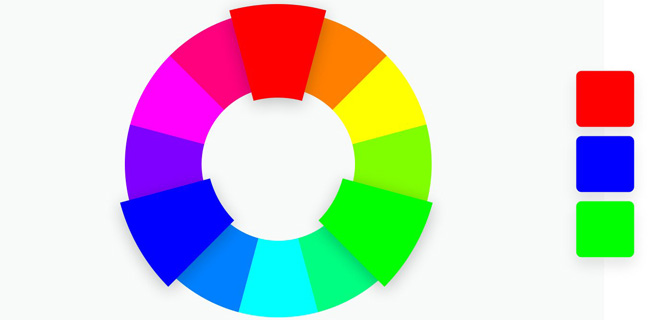 The terminology of color, wheel color and skill used to color Picture 13
The terminology of color, wheel color and skill used to color Picture 13 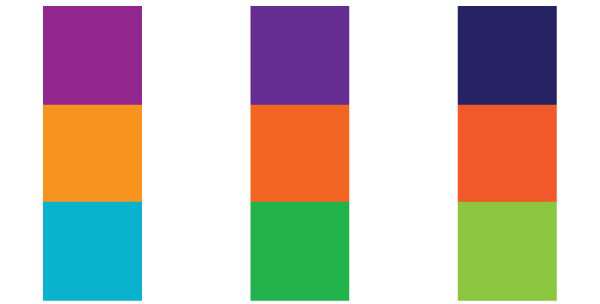 The terminology of color, wheel color and skill used to color Picture 14
The terminology of color, wheel color and skill used to color Picture 14 This color scheme uses three equally spaced colors on the color wheel to create a color band with high contrast, but less than the complementary color scheme. This combination creates rich, vibrant color bands.
Three colors are located at three different angles on the color wheel, so they combine and complement each other to create a balance for this color scheme. However, it is also because of this balance, although there are three colors used, but sometimes you will still see this combination is quite monotonous, safe and lack of creativity.
 The terminology of color, wheel color and skill used to color Picture 15
The terminology of color, wheel color and skill used to color Picture 15 Four color schemes (Tetradic)
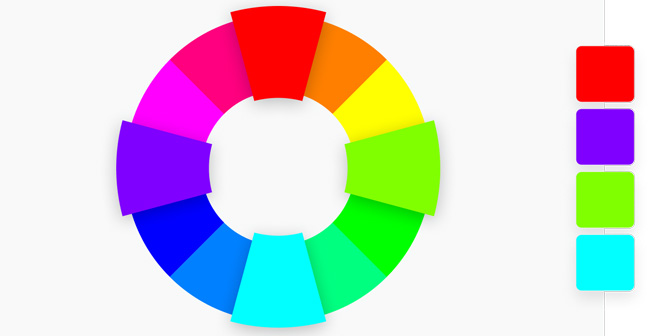 The terminology of color, wheel color and skill used to color Picture 16
The terminology of color, wheel color and skill used to color Picture 16 This color scheme uses four equally spaced colors on the color wheel. However, you must be careful not to use all four colors at the same level as it will create chaos. The more colors in your palette, the harder it is to balance.
The four color scheme works best when you choose a dominant color and use the remaining colors as highlights.
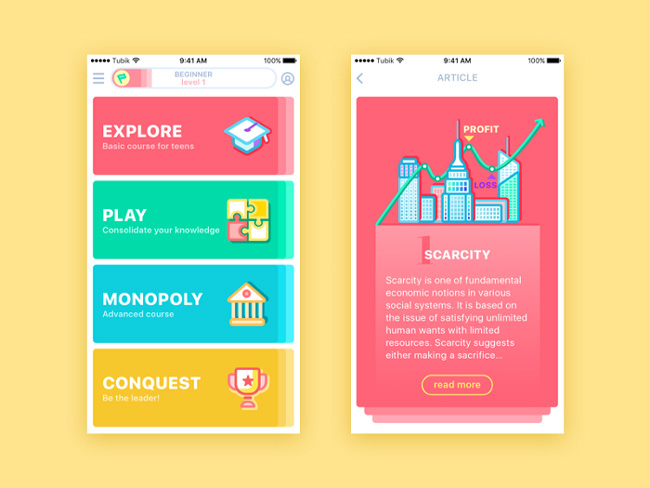 The terminology of color, wheel color and skill used to color Picture 17
The terminology of color, wheel color and skill used to color Picture 17 Hot and cold colors
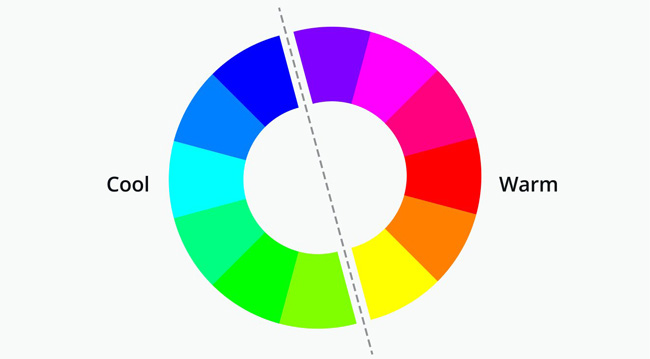 The terminology of color, wheel color and skill used to color Picture 18
The terminology of color, wheel color and skill used to color Picture 18 The color wheel is divided into hot and cold colored areas. Color combinations using color wheels will often balance between hot and cold colors. According to color psychology, color "temperature" will evoke different feelings when we look at a design. For example, warm colors will give viewers a sense of comfort and energy, while dark colors give a sense of tranquility and tranquility.
Hot colors range from Red to Yellow. The vibrant colors in this range are like the sun, used when you want to draw attention. Hot colors have a strong effect, affecting the space around it.
Cold colors are between Green and Purple. These colors bring a cool, gentle mind.
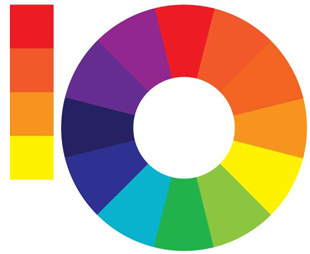 The terminology of color, wheel color and skill used to color Picture 19
The terminology of color, wheel color and skill used to color Picture 19 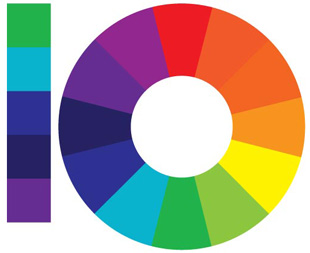 The terminology of color, wheel color and skill used to color Picture 20
The terminology of color, wheel color and skill used to color Picture 20 Tint, Shade and Tone
Tint is the color created after adding white to the original color to increase the brightness of the color. Tint helps reduce the "intensity" of color, which is quite useful in balancing colors when mixing colors.
Shade is the color created after adding black to the original color to reduce the brightness and increase the darkness of the color. Shade creates deeper and more diverse colors. Shade to impress and can overwhelm other colors.
Tone is the color created after adding gray to fade the original color. Tone is a more refined version of the original color.
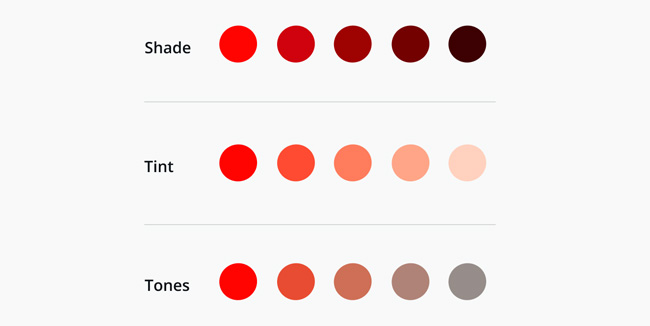 The terminology of color, wheel color and skill used to color Picture 21
The terminology of color, wheel color and skill used to color Picture 21 Properties of colors
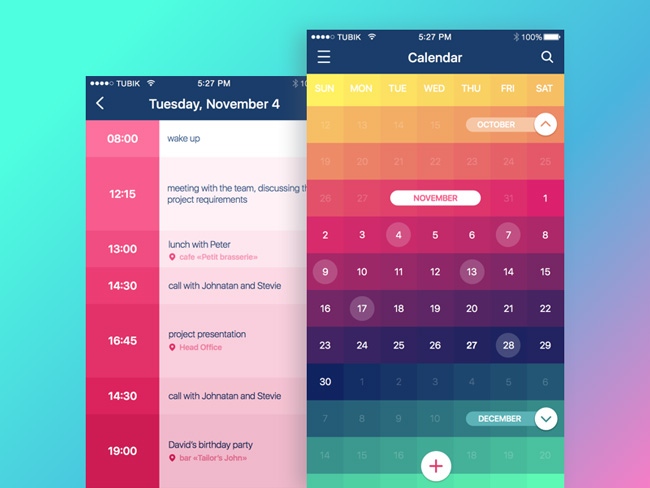 The terminology of color, wheel color and skill used to color Picture 22
The terminology of color, wheel color and skill used to color Picture 22 Hue - Tone
Hue is a combination of 12 different colors on the color wheel. Hue is the element used to transform into the aforementioned Tint, Shade, Tone by adding black, white, and gray colors to the original tones.
Saturation - Saturation
Saturation is not created when you mix Hue with other colors but simply the way colors are displayed under different lighting conditions. Saturation helps depict dark or light colors according to different light-intensity intensity. This value is also known as color intensity.
Luminance - Brightness
Luminance is the brightness or darkness of a certain color, changing the brightness of colors by dragging their Luminance to the right or left.
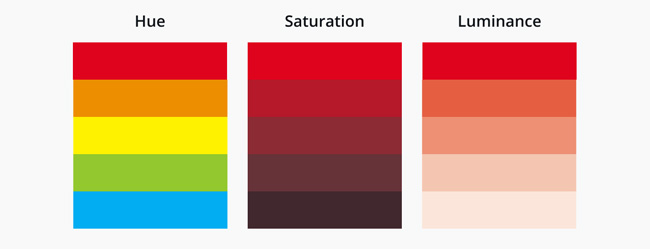 The terminology of color, wheel color and skill used to color Picture 23
The terminology of color, wheel color and skill used to color Picture 23 Color is the essence of humanity. Learn how to use colors effectively in your work and life, the results will really make you satisfied.
You should read it
- CSS color coding, standard color code in website design
- What is the profile color?
- Standard color encoding for programmers and designers
- 4 software to help get professional color codes
- Beautiful hair color palette 2020
- Color Impact: color scheme helps you
- What is color space?
- HTML color code - color code table in html
- Tools to get colors online quickly
- 4 apps that change hair color in photos on iPhone
- The secret to choosing dyed hair color that matches skin color
- Color command in Windows
May be interested

Instructions for registering as an online citizen identity at home

Tips for learning Anime and Manga drawing tips

Guide to drawing Anime and Manga characters' feet from different perspectives

Guide to drawing beautiful mouth anime characters

Instructions for drawing details on Anime and Manga characters

Instructions for drawing nose characters Anime, Manga standard






 30 terms you should know when using the Internet
30 terms you should know when using the Internet Fix the situation where the computer mouse wheel has a scrolling error
Fix the situation where the computer mouse wheel has a scrolling error 10 most confusing terms in the field of information technology
10 most confusing terms in the field of information technology Instructions for making steering wheel with carton cover to play racing games
Instructions for making steering wheel with carton cover to play racing games Test of technology terminology - Part 12
Test of technology terminology - Part 12 Windows operating system: Exploiting scrolling function
Windows operating system: Exploiting scrolling function